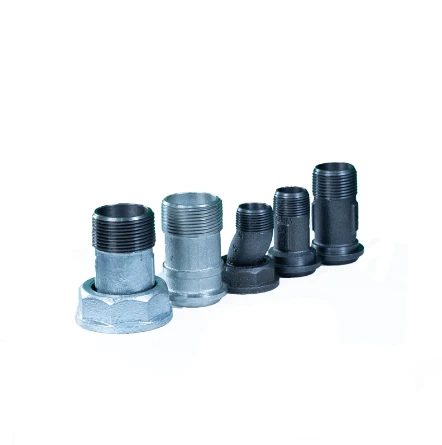The 1 inch pipe 90 degree elbow is a crucial component in plumbing and piping systems, facilitating a wide range of flow direction changes in both residential and industrial applications. As an expert with extensive experience in fluid dynamics and plumbing infrastructure, I will delve into the intricacies of this seemingly simple yet highly essential fitting, examining its function, material composition, installation methods, and the best practices for purchasing quality products.

The 90 degree elbow is predominantly utilized to change the direction of a pipe run by a right angle, a feat accomplished by curving the path of the fluid without disrupting its velocity or causing significant pressure loss. This small, unassuming fitting plays a pivotal role in ensuring efficiency and optimal flow within piping networks. Constructed to meet the rigorous demands of pressure and temperature variations, this elbow acts as a cornerstone in both domestic plumbing systems and large-scale industrial operations including oil, gas, and chemical processing.
1 inch elbows are available in a variety of materials, each suited to specific environments and fluid types. Common materials include stainless steel, brass, copper, PVC, and galvanized steel, each offering unique benefits. Stainless steel elbows boast excellent resistance to corrosion and heat, making them ideal for harsh industrial conditions. Brass and copper options are known for their superior thermal conductivity and corrosion resistance, perfect for hydronic heating systems and domestic water supply lines. PVC elbows cater to light-duty applications, where cost-effectiveness and ease of installation are paramount. Galvanized steel, with its robust zinc coating, is suitable for applications requiring additional protection against the elements and mechanical wear.

Installation of a 1 inch pipe 90 degree elbow requires adherence to precise standards and protocols to ensure a durable, leak-free connection.
The process typically involves cleaning both pipe ends and the inside of the elbow to remove any contaminants that could impede a seamless seal. The use of appropriate sealants or O-ring components further secures the connection, preventing leaks and maintaining system integrity. In high-pressure scenarios, welding or soldering may be employed, particularly with metal elbows, to offer extra security against potential joint failure.
1 inch pipe 90 degree elbow
For those looking to purchase high-quality 1 inch pipe 90 degree elbows, certain criteria should guide their selection. It's vital to assess the chemical composition and pressure rating of the elbow to ensure compatibility with the intended application. Products that comply with industry standards such as those set by ASTM or ANSI provide a level of assurance in terms of safety and performance. Additionally, sourcing from reputable manufacturers with a proven history of craftsmanship can significantly mitigate the risk of component failure.
Real-world examples abound of how the humble 1 inch pipe 90 degree elbow has prevented system inefficiencies and failures. In complex systems, such as those found in chemical processing plants, a strategically placed elbow can redirect corrosive fluids efficiently, maintaining the plant's operational efficiency without compromising safety. Similarly, in residential heating systems, these elbows ensure that hot water is effectively rerouted through radiators, providing consistent heat distribution throughout a home.
The trustworthiness of the 1 inch elbow’s performance is underscored by its widespread use in safety-critical applications. Its design evolution over the years has enhanced its resilience and adaptability to varying pressures, temperatures, and environmental conditions. By choosing the right material and following rigorous installation practices, one can ensure the longevity and reliability of this essential plumbing component.
In summary, the 1 inch pipe 90 degree elbow is more than just a fitting; it's a vital entity within fluid management systems. By understanding its properties, installation techniques, and application environments, users can maximize its efficiency and reliability. When selecting this product, prioritizing quality and compliance with international standards is crucial—an insight derived from years of expertise and reinforced by exemplary industry practices.
Post time:
Fév-08-2025











